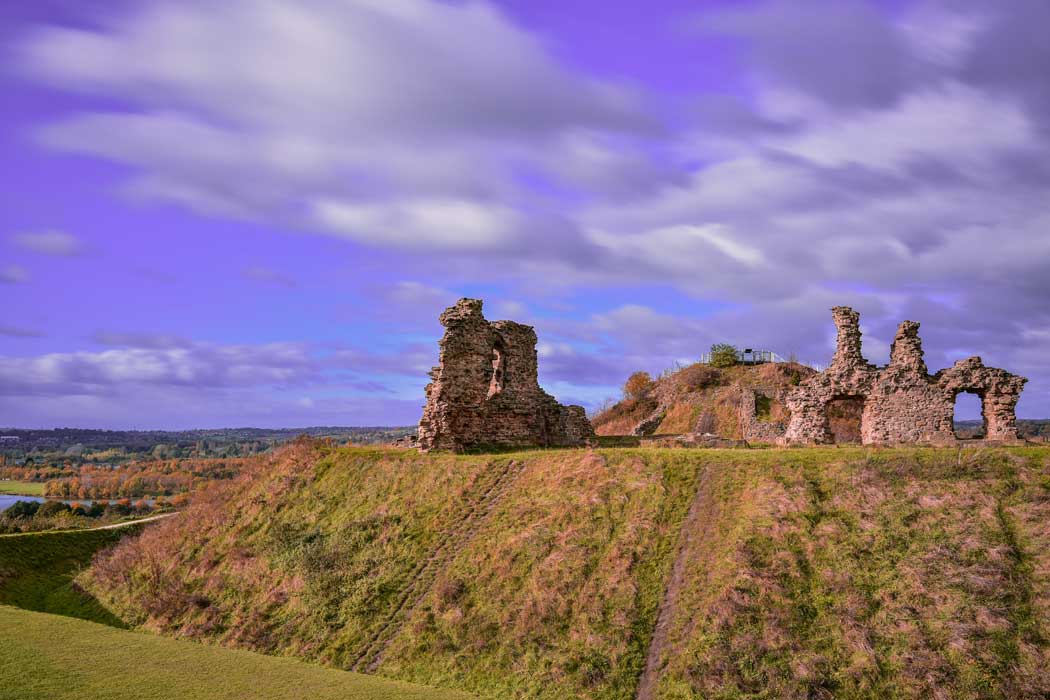Sandal Castle is a medieval castle overlooking the River Calder in suburban Wakefield. It is noted for its connection with the Dukes of York and Richard III and also for its roles in the Battle of Wakefield and the English Civil War.
The castle dates to Norman times when William de Warenne, 2nd Earl of Surrey was granted the estate in 1107 and subsequently built a timber castle and it is believed that Hamelin de Warenne began the task of replacing the wooden fortifications with stone.
After the death of the seventh earl in 1347, the estate passed to Edward III who granted the castle to his six-year-old son Edmund of Langley, who became Duke of York in 1385. In 1483 the castle was chosen by Richard III as a northern base; however, Richard III died two years later at the Battle of Bosworth and the castle started to decline in importance.
The castle played a significant role in the Battle of Wakefield, during the Wars of the Roses in December 1460 when Richard Plantagenet and his son Edmund, Earl of Rutland were killed when they were outnumbered by the House of Lancaster’s army.
Sandal Castle was also a Royalist stronghold in the English Civil War and in 1645 it was besieged by Parliamentarian troops on three separate occasions before surrendering on 1 October 1645. Although the castle had begun to deteriorate earlier, it was in ruins by the end of the third siege and in 1646 parliament ordered that the castle be made untenable.
The castle was also the setting for the William Shakespeare play, Henry VI, Part 3.
The castle ruins comprise an archaeological site that is classed as a scheduled monument and a Grade II* listed building.

What to see at Sandal Castle
Although Sandal Castle has had a rich history, the castle gradually declined between the 16th and 17th centuries and was in ruins by the end of the English Civil War. The castle declined even further during the following hundred years when locals used the castle as a source for building materials.
Although there is very little of the original castle remaining, Sandal Castle’s underlying earthworks and its motte are very well preserved.
Nowadays visitors to the castle can explore the ruins, which are accompanied by information boards that provide historical context. The site also offers lovely views of the Calder Valley.
Visiting Sandal Castle
Sandal Castle is in suburban Sandal, around 2.8km (1¾ miles) south of Wakefield city centre.
You can walk here from the city centre in around half an hour, although it is also reasonably easily accessible by public transport. It is a six-minute walk from the closest bus stop on Barnsley Road (which has regular direct buses to Leeds and Wakefield city centres) and it is a 12-minute walk to Sandal and Agbrigg railway station, which is one stop south from Wakefield Westgate.
The site is currently undergoing conservation work to protect the ruins and to also improve the visitor experience.
There is a cafe on the site, in the building previously used as a visitor centre, which is a nice spot for a drink and a bite to eat with lovely views of the castle.
There is free parking on the site.


There are no comments yet.